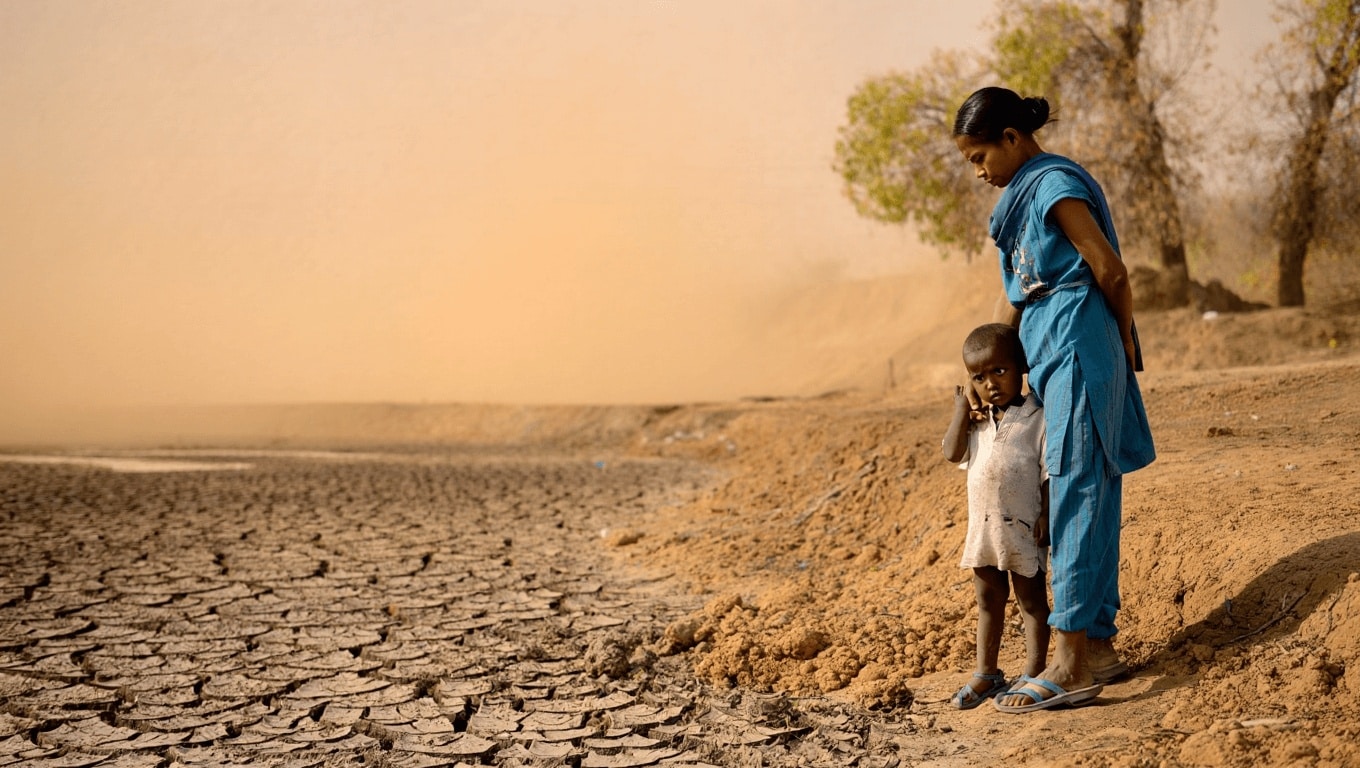The latest findings from the University of Oxford shed light on a dire conjunction between poverty and climate change. The Global Multidimensional Poverty Index 2025 highlights how environmental risks exacerbated by climate shifts intensify hardships for those already struggling with multifaceted deprivations. This comprehensive report reveals a staggering 887 million people worldwide, nearly 80% of those living in multidimensional poverty, are directly exposed to severe climate risks such as extreme heat, floods, droughts, and air pollution.
The Interplay Between Climate Crisis and Global Poverty
TubiTV Just Hit 200 Million Users – Here’s Why
10 Perfect-Score Shows Buried on Prime Video Right Now
The Oxford report, developed in collaboration with the United Nations Development Programme (UNDP), marks the first global analysis to integrate poverty and environmental exposure data. Titled “Overlapping Hardships: Poverty and Climate Hazards,” the study arrives just before the pivotal COP30 summit, aiming to steer global leaders toward urgent, integrated action.
Key findings include:
-
- 651 million impoverished individuals face at least two simultaneous environmental threats.
The $3.99 Streaming Service With 500+ Oscar Winners Nobody Knows About
Cancel These 3 Subscriptions Before November 1st – Here’s Why
-
- An additional 309 million people endure three to four concurrent climate hazards.
These overlapping dangers pose what the Oxford Poverty and Human Development Initiative (OPHI) calls a “triple or quadruple burden,” drastically complicating the lives of those with minimal resources and limited access to social safety nets.
Regional Focus: South Asia and Sub-Saharan Africa
The uneven impact of environmental risks is most pronounced in South Asia and Sub-Saharan Africa, regions that are home to the largest numbers of the global poor facing climate risks. In South Asia alone, nearly the entire population experiencing extreme poverty is exposed to one or more environmental hazards, with about 351 million people dealing with at least two risks.
Climate Projections and Future Risks
The report warns of even more severe future scenarios. Climate projections indicate that regions with high levels of multidimensional poverty will experience the most significant increases in average temperatures by the end of the century. Understanding these patterns is crucial for developing strategies that not only address poverty alleviation but also enhance resilience against climate change.
Spotlight on Argentina: A Comparative Analysis
A specific study focusing on Argentina shows that despite having a low incidence of multidimensional poverty relative to other regions, local disparities exist. The Northeast (NEA) and Northwest (NOA) regions of Argentina exhibit the highest rates within the country. This nuanced understanding helps tailor policy responses to regional needs, ensuring more effective interventions.
Measuring Multidimensional Poverty
The Alkire-Foster method, utilized in the multidimensional poverty index, considers ten indicators across three dimensions: health, education, and living standards. People are identified as multidimensionally poor if they face deprivations in a third or more of these indicators. This approach not only captures the proportion of the population that is poor but also the intensity of their hardships.
Toward Integrated Responses to Poverty and Climate Challenges
The Oxford report underscores the need for policies that link poverty reduction with environmental action. Recommendations stress enhancing local response capabilities, community-based adaptations, and international funding for the most vulnerable areas. Pedro Conceição, Director of the Human Development Report Office at UNDP, emphasizes that the identified burdens are not just current issues but are expected to intensify, highlighting the necessity for resilient, dual-impact strategies to address both poverty and climate change effectively.
Similar posts:
- Climate change could transform the Sahara Desert: unprecedented rainfall increase expected
- Why altitude is key for Argentine wines: Discover the secret to their unique flavor
- Only those watching the tropics in October catch the shift: What it really means for you.
- Even weak lightning can spark devastating fires: Stay alert
- Jane Goodall Netflix Doc Famous Last Words Debuts Oct 2025 – Why It Matters To Conservation Fans

Daniel Harris is a specialist journalist focused on the crossroads of breaking news, extraordinary history, and enduring legends. With a background in historical research and storytelling, he blends timely reporting with timeless narratives, making complex events and ancient myths resonate with today’s readers. Daniel’s work often uncovers surprising links between present-day headlines and legendary tales, offering unique perspectives that captivate diverse audiences. Beyond reporting, he is passionate about preserving oral traditions and exploring how extraordinary stories continue to shape culture and identity.

